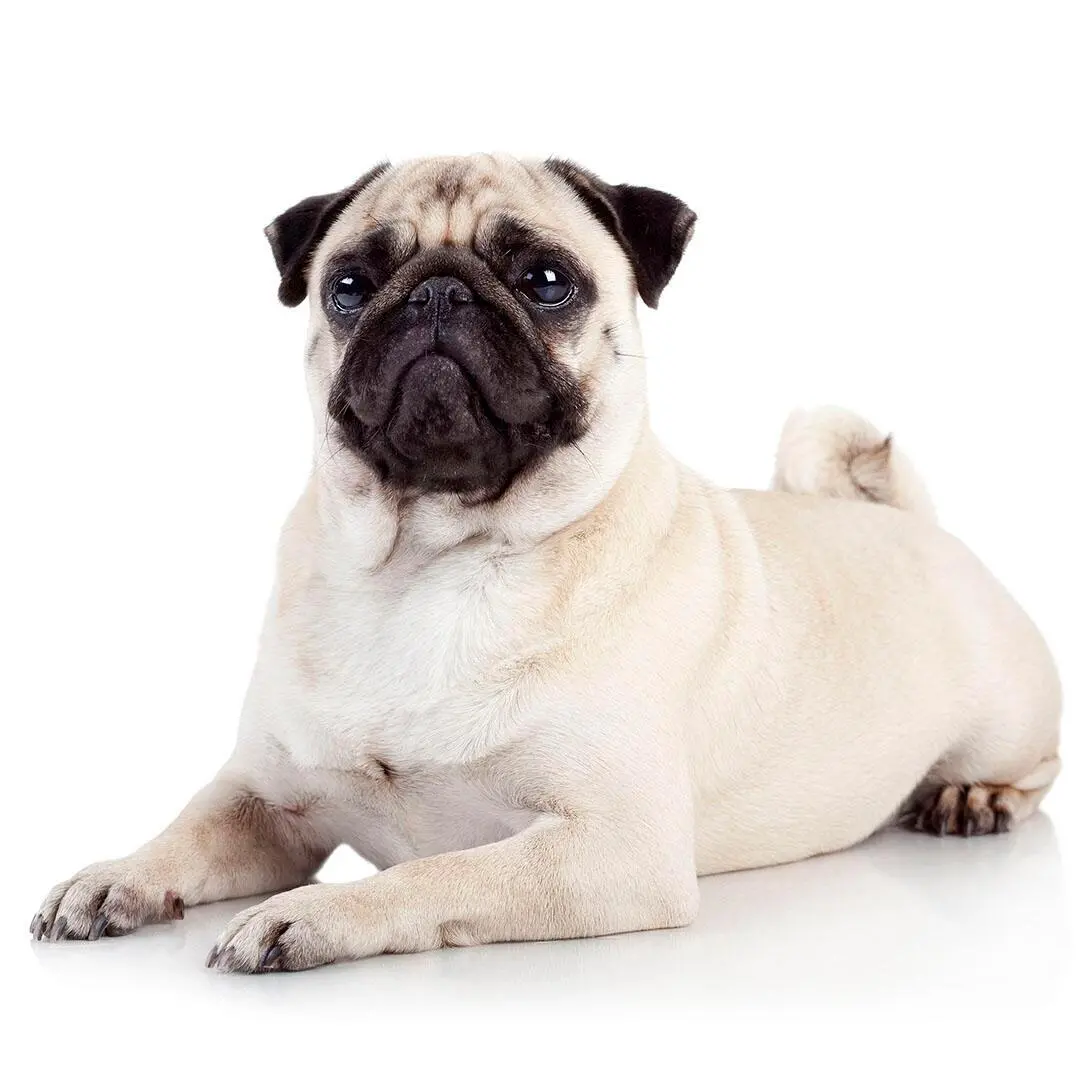
Pug
Pugs are small, charming dogs known for their wrinkled faces and affectionate personalities.
Extended Description
Pugs are small, toy-sized dogs originally bred in China as companions for royalty. They are known for their distinctive wrinkled faces, short noses, and curled tails. Pugs are affectionate, playful, and have a strong desire to be close to their families, making them excellent companions for people of all ages.
Interesting Facts
Pugs are one of the oldest dog breeds, with a history that dates back over 2,000 years. They were popular among Chinese emperors and later became a favorite in European royal courts.
Care Recommendations
Pugs require regular grooming to keep their short coat clean and healthy. Their facial wrinkles should be cleaned regularly to prevent infections, and they are prone to obesity, so a balanced diet and regular exercise are important.
Temperament
Pugs are friendly, affectionate, and playful. They are known for their strong bond with their families and their love of attention. Early socialization and consistent training are important to ensure they are well-behaved and confident.
Health Issues
Common health issues in Pugs include brachycephalic syndrome, hip dysplasia, and obesity. Regular vet check-ups, a balanced diet, and appropriate exercise are essential for their well-being.
Living Conditions
Pugs are well-suited to apartment living, as they do not require much space. However, they should be protected from extreme temperatures due to their brachycephalic (short-nosed) structure.
Training Tips
Training should be consistent and gentle, as Pugs can be sensitive and stubborn at times. Positive reinforcement techniques work best with this breed, and early training is crucial to prevent bad habits.
Exercise Needs
Pugs need regular exercise to stay healthy and prevent obesity. Short, daily walks and indoor playtime are usually sufficient to meet their exercise needs. However, care should be taken to avoid overexertion, especially in hot weather, due to their brachycephalic structure.
Return to Other Breeds



